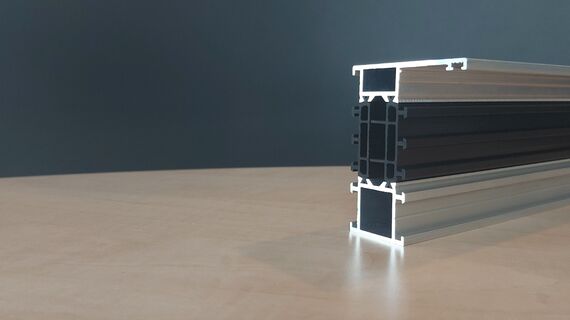Aluminium, an architectural game-changer
Architecture inspires, defines trends and helps to shape our worldview. Not surprisingly, materials as versatile as aluminium have helped create some of the most beautiful and sustainable architectural projects around. We look at the origins of aluminium architecture
In architecture, aluminum can realize what other common building materials, such as brick and wood, cannot. It is strong yet lightweight, resistant to corrosion, endlessly recyclable and it can be formed into nearly any shape. Over the years, aluminum has been a driving force in revolutionizing contemporary architecture. We show you why generations of architects, manufacturers and homeowners have worked with and still prefer aluminum.
From humble beginnings and to landmark achievements
At the start of the 20th century, aluminum was not widely used in architecture and engineering applications due to cost. But thanks to production process innovation in the 1920s, the cost of aluminum was reduced by 80% - which opened up lots of opportunities. The metal became popular for structural applications and for use in numerous building components. A game-changer for doors, windows, sliding systems, roofing, sun shading, and curtain walls alike.
Over the years, aluminum has been a driving force in revolutionising contemporary architecture.
Aluminum soon began to appear in famous architectural masterpieces such as in New York City's Empire State Building. Completed in 1931, it remained the world’s tallest building until 1970. Its basic structure and components were completed in aluminum, with the interior and lobby also finished with the material.
Throughout the mid-20th century, iconic architects widely experimented with aluminum. An interesting early example of modernist architecture employing the material is the Aluminaire House, the first all-metal house in the United States, designed by Lawrence Kocher and Albert Frey. Located in Palm Springs, California, the house is completely made up of donated materials and was built in just ten days. It is a world-famous example that showcases the unlimited possibilities of aluminum.
Pushing green building boundaries
Aluminum has continued to push boundaries into the 21st century. Modern aluminum alloys easily support the weight of heavy glass spans, offering you a maximum of daylight entrance in the process. Today’s skyscrapers, with a combination of glass and aluminum frames, achieve gravity-defying shapes and heights – with significantly reduced carbon emissions.
With an increasing emphasis on green building and energy efficiency, people around the world favour aluminum as one of the most sustainable construction materials. With its extreme durability, aluminum can be used in any climate and it will still give you excellent protection. The insulation technology used in aluminum windows is the future-proof answer to most low-energy requirements.

Moreover, at the end of the product life cycle, the metal is melted to form new aluminum without any loss of quality. Thanks to this infinite recyclability, aluminum-intensive buildings have won numerous sustainable awards including LEED Platinum and BREEAM Outstanding. It makes aluminum the optimal green building partner for any project, including yours.
Copyright
Axis Towers – Nino Mosulishvili, Nikoloz Kilasonia, Alexander Meshevidze, Gega Astakhishvili (architects); Tamar Digmelashvili (photographer)
Perth Arena – ARM Architecture & CCN Architects (architects), Stephen Nicholls (photographer)



